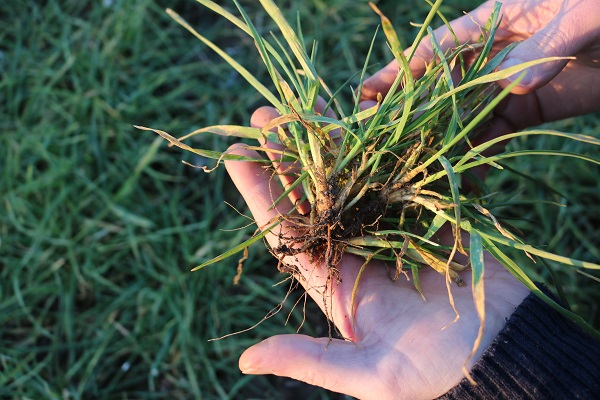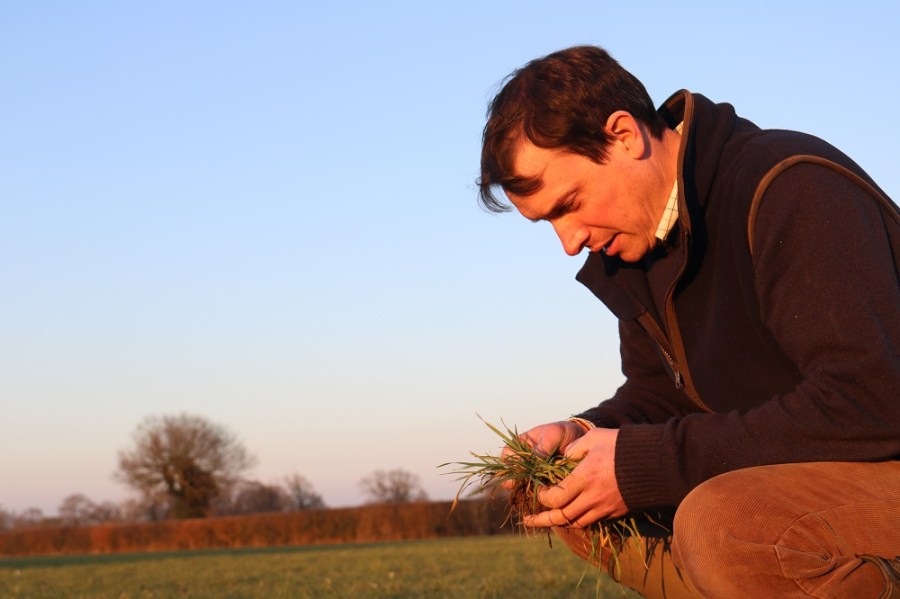Maris Otter winter barley has been grown in North Norfolk for the cask-beer market for over 50 years. CPM travels to the Norwich beer festival to sample the product and find out how best to grow the variety.
It’s the flavour profile that’s kept Maris Otter a firm favourite with the traditional cask brewers.
By Tom Allen-Stevens
Oliver Scott has the sort of fondness and respect for his Maris Otter winter barley you might expect he’d have for an elderly member of his family.
“They say that Maris Otter is drilled with a will to die,” he says with a wry smile. “If there’s a cloud on the horizon, it’ll catch rhynchosporium – that’s its reputation, although I’m not sure it’s fair.”
The barley he’s brought us to at Grange Farm, Thelveton, near Diss in Norfolk, certainly doesn’t show any signs of such weakness. The 66ha crop sits in the seven-year rotation with 107ha of Venture winter barley, oilseed rape, winter wheat, sugar beet, spring barley and beans. There’s also a 1500-head beef enterprise alongside the 1650ha of cropping.

Maris Otter doesn’t hold back at emergence and has tillered well this season.
“Malting barley is a Norfolk crop and a good fit for our soils,” Ollie explains. “These range from medium clay to sandy loams. The Otter fits better on the lighter land, and you’d struggle to control the N on full-bodied soils, so we crop the heavier fields with Venture. There aren’t that many growers with winter malting barley, but it spreads the risk and you can make money from it. Winter barley is also a good entry for OSR.”
It’s grown on contract for local merchants H Banham, who also supply the seed. “It’s a 53-year-old variety, so you have to look after it, although we don’t treat it that differently from the Venture.”
The barley drilling starts in the last week of Sept on the Venture with the aim of finishing the Maris Otter in the first week of Oct. It follows wheat at Grange Farm, although other growers in N Norfolk successfully put Otter after potatoes or sugar beet. “One thing to note is that it doesn’t have resistance to barley yellow mosaic virus, unlike modern types.”
The crop currently in the ground emerged within five days, he reports. “It doesn’t fight like a modern variety, but doesn’t hold back. Give it the right conditions and it’ll go – we’ve had really good tillering this season, although it was an exceptionally good autumn.”
By the end of Feb, this crop is looking for its nitrogen, Ollie notes. “Last year we applied it in two equal doses – 24% N liquid with 7.5% SO3, supplied by Omex. The first was applied on 11 March with the follow-up about 10 days later.”
The total dose was 125kgN/ha, which was 15-30kgN/ha less than the Venture. This reflects Maris Otter’s 1.6% max grain N contract spec. Grown for traditional cask beers, that’s 0.2% below the spec for Venture, that heads for the lighter beers and lagers.
On the disease side, rhynchosporium is the main threat, although ramularia is now causing increasing problems in East Anglia, reports local Bayer commercial technical manager Jack Hill.
“Resistance has become more of an issue with ramularia, with decreased sensitivity to both azoles and SDHIs, so it’s important to use a multi-site, such as chlorothalonil, particularly at the T2 timing.”
His recommendation with Maris Otter is to kick off protection with a Raxil Star seed dressing (fluopyram+ prothioconazole+ tebuconazole), followed by a two-spray programme based around Siltra Xpro (bixafen+ prothioconazole) or Fandango (fluoxastrobin+ prothioconazole), adding CTL to the T2 spray in both.
“Mildew can be a problem in Maris Otter, but this programme should hold it back. Watch out for the cut-off in some malting contracts – some fungicides should be applied before the awns are fully out.”
Last year, Ollie’s T1 spray was Siltra at the end of March, followed up a month later with CTL. Fandango was then applied as a late flag leaf spray, just as the awns were appearing. “This year, the plan is to base the fungicide application on Priaxor (fluxapyroxad+ pyraclostrobin),” he says.
A T1 chlormequat is followed up at T2 with Terpal (mepiquat chloride+ 2-chloroethylphosphonic acid). “We don’t have much of a problem with brackling or lodging in the Otter, and the straw is really valued for the beef unit.”
They aim to harvest at around 14%, and while they’re well practiced at ensuring grain N is at the right level, meeting the screenings spec (max 6% through a 2.25mm sieve and min 70% over 2.5mm) can sometimes be a challenge. “We keep crop harvested from the headlands separately,” notes Ollie.
“Otter doesn’t grow as tall or thick as Venture, but it’s still a good-looking variety and the grain has a reddish tinge to it.” At an average yield of 5.5t/ha, it lags behind the Venture by 2t/ha, but there’s a £50/t premium, which makes up the difference, he says.
“A lot of farmers may consider the return’s not worth it, but there’s a really strong demand for Maris Otter from the craft-beer market and we don’t really treat it any different to a more modern variety. Norfolk’s also its natural home, so it makes sense,” concludes Ollie.
Maris matters
Norwich played host to the Great British Winter Beer Festival 2018, that took place at the end of Feb. Around 400 craft beers, from pale ales to the darkest stouts were available to try, many of them brewed proudly from the local crop of Maris Otter.
It’s estimated each harvest of the variety makes around 300M pints, and it’s exported to over 20 countries. Since 1998, 13 of CAMRA’s cask Champion Beers of Britain have used Maris Otter. The Norfolk Brewhouse, based in Hindringham, hosted the Maris Otter Brewery Bar at the festival with its Moon Gazer beers proving quite a pull for the more discerning beer drinker.
“Maris Otter gives the beer a biscuit back note and a robust flavour,” claims Tom Rivett, a volunteer barman at the festival, and senior grain trader at Banhams.
“It’s the flavour profile as well as its ease of brewing that’s kept Maris Otter a firm favourite with the traditional cask brewers. The fact that it’s been grown in Norfolk for more than 50 years is also a great story that gives the beer some provenance.”
Demand for the crop is currently strong, with a market of around 50,000t. “Getting the 1.6% low grain N is the biggest challenge for most growers and that’s really down to the right soil type. The sandy loams of North Norfolk are ideal,” says Tom.
“Screenings are also important – if the grain’s too small there’s little goodness in it.”
Weather is the biggest threat to the supply of this relatively niche market. Seed purity is also important. “The variety can break down quite easily, so we invest a lot in seed production, making sure the variety sold onto farms remains pure,” he says.




